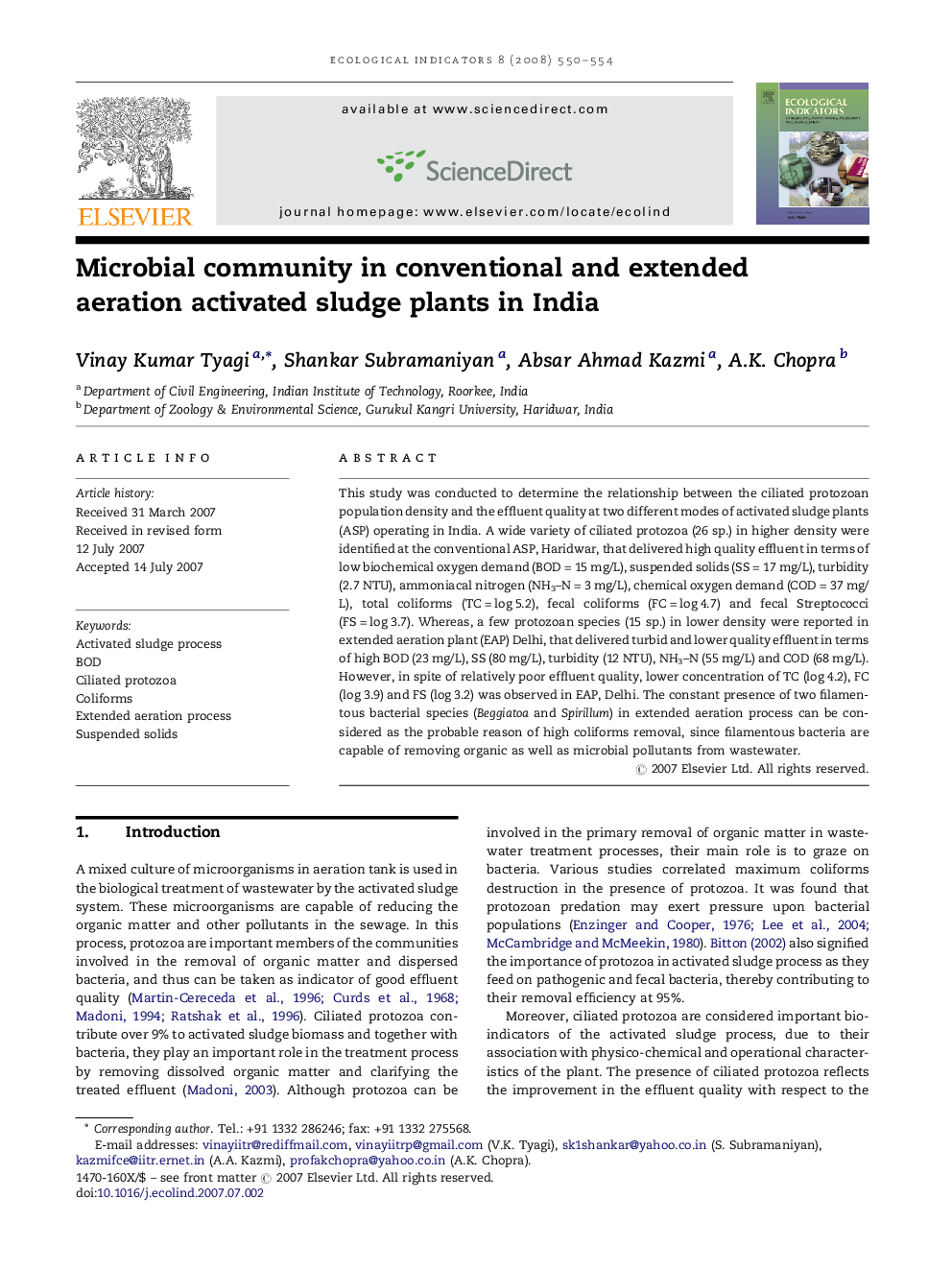| Article ID | Journal | Published Year | Pages | File Type |
|---|---|---|---|---|
| 4374397 | Ecological Indicators | 2008 | 5 Pages |
This study was conducted to determine the relationship between the ciliated protozoan population density and the effluent quality at two different modes of activated sludge plants (ASP) operating in India. A wide variety of ciliated protozoa (26 sp.) in higher density were identified at the conventional ASP, Haridwar, that delivered high quality effluent in terms of low biochemical oxygen demand (BOD = 15 mg/L), suspended solids (SS = 17 mg/L), turbidity (2.7 NTU), ammoniacal nitrogen (NH3–N = 3 mg/L), chemical oxygen demand (COD = 37 mg/L), total coliforms (TC = log 5.2), fecal coliforms (FC = log 4.7) and fecal Streptococci (FS = log 3.7). Whereas, a few protozoan species (15 sp.) in lower density were reported in extended aeration plant (EAP) Delhi, that delivered turbid and lower quality effluent in terms of high BOD (23 mg/L), SS (80 mg/L), turbidity (12 NTU), NH3–N (55 mg/L) and COD (68 mg/L). However, in spite of relatively poor effluent quality, lower concentration of TC (log 4.2), FC (log 3.9) and FS (log 3.2) was observed in EAP, Delhi. The constant presence of two filamentous bacterial species (Beggiatoa and Spirillum) in extended aeration process can be considered as the probable reason of high coliforms removal, since filamentous bacteria are capable of removing organic as well as microbial pollutants from wastewater.
